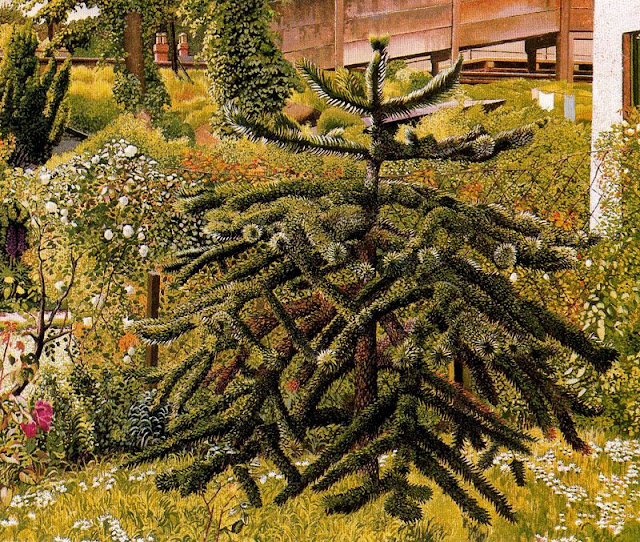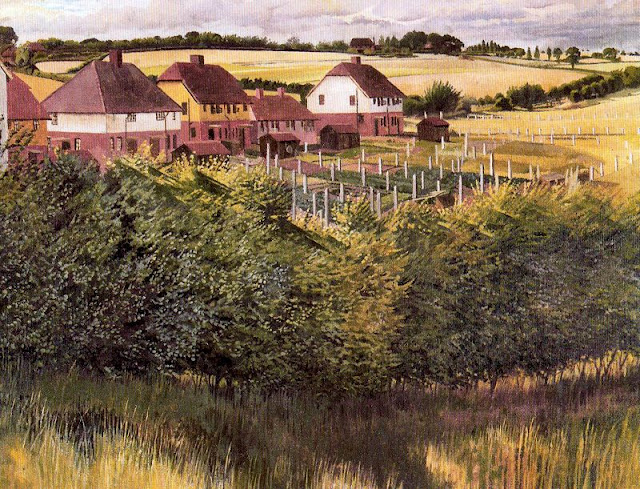Stanley Spencer
Sir Stanley Spencer (30 June 1891 – 14 December 1959) was an English painter. Much of his work depicts Biblical scenes, from miracles to Crucifixion, happening not in the Holy Land but in the small Thames-side village where he was born and spent most of his life. He referred to Cookham as "a village in Heaven." Fellow-villagers frequently stand in for their Gospel counterparts, lending Christian teachings an eerie immediacy.
Spencer was born and spent much of his life in Cookham in Berkshire. His father, William Spencer, was a music teacher. His younger brother, Gilbert Spencer (1892–1979), was a painter of landscapes.
From 1908 to 1912, Spencer studied at the Slade School of Art at University College, London under Henry Tonks and others. His contemporaries at the Slade included Dora Carrington, Mark Gertler, Paul Nash, Edward Wadsworth, Isaac Rosenberg and David Bomberg.[1] So profound was his attachment to the village of his birth that most days he would take the train back home in time for tea. It even became his nickname: his fellow student C.R.W. Nevinson dubbed him Cookham, a name which Spencer himself took to using for a time.
After a long period of agonising whether or not to join up, in 1915 Spencer volunteered to serve with the Royal Army Medical Corps and worked as an orderly at the Beaufort War Hospital (which later became Glenside).[2] In 1916, the 24-year-old Spencer volunteered for service with the RAMC in Macedonia, and served with the 68th Field Ambulance unit. He subsequently volunteered to be transferred to the Berkshire Regiment. His survival of the devastation and torment that killed so many of his fellows indelibly marked Spencer's attitude to life and death. Such preoccupations come through time and again in his religious works.
Towards the end of the war he was commissioned by the War Artists Advisory Committee to paint what became Travoys Arriving with Wounded at a Dressing Station at Smol, Macedonia, September 1916 (now in the Imperial War Museum). It was visibly the consequence of Spencer's experience in the medical corps. A further major commission was to paint murals for the Sandham Memorial Chapel in Burghclere dedicated to the war dead. The altarpiece depicts the Resurrection of the Soldiers.[3]
In 1939, he went on a painting holiday at the suggestion of one of his friends, William Rothenstein, to Leonard Stanley in Gloucestershire. This holiday extended to two years; Stanley stayed at the White Hart Inn and created many of his important works in his room above the bar which he used as a studio, including 'Us in Gloucestershire' and 'The Wool Shop'.
Spencer's work as a war artist in the Second World War included his epic depiction of shipbuilding workers and their families at Port Glasgow on the Clyde. When the war ended he again took up, as did certain other British neo-romantic artists of the time, his visionary preoccupations — in Spencer's case with a sometimes apocalyptic tinge.











































































































































































.jpg)



























































I love painting & your art is awesome, Thanks for sharing it
ردحذفOffer Waterman & Co.